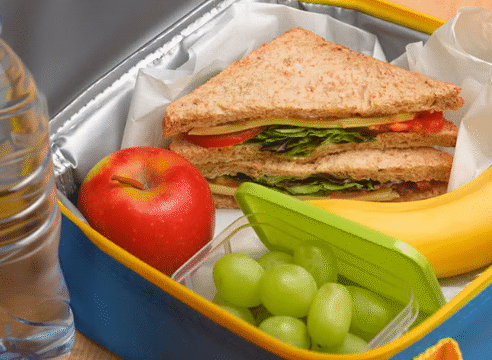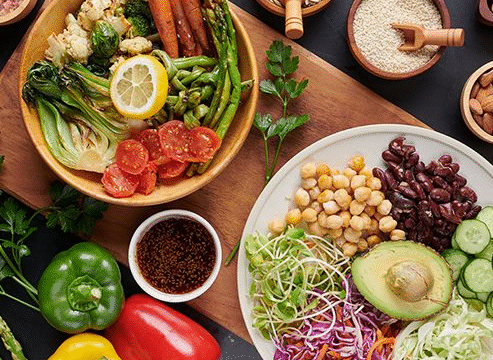Cookies have always been one of the most comforting treats in the world.
Whether paired with a hot drink, enjoyed as an afternoon pick-me-up, or baked for a family gathering, cookies have a timeless charm.
However, many traditional cookie recipes are loaded with refined sugar and white flour, which can cause quick spikes in blood sugar.
For those who want to enjoy cookies without that sudden energy crash, learning how to make low glycemic index (low GI) cookies is the perfect solution. These cookies not only taste delicious but also provide a steadier release of energy, making them a smarter option for anyone looking to eat in a more balanced way.
The glycemic index measures how quickly foods raise blood sugar levels. Foods with a high GI cause rapid spikes, while those with a low GI are digested more slowly, providing sustained energy. This is especially helpful for people who are mindful of their blood sugar, but it is equally beneficial for anyone who wants to feel full and energized for longer after a snack. By making some simple swaps in the kitchen, cookies can be transformed into a treat that feels indulgent yet aligns with healthier eating goals.
The first step in creating a low GI cookie is rethinking the type of flour you use. Traditional all-purpose white flour is considered higher on the glycemic index, so a good alternative is whole grain flour. Whole wheat flour, oat flour, or almond flour are all excellent options. Whole wheat flour still provides structure and that classic baked taste, but with added fiber to slow down digestion. Oat flour brings a naturally mild sweetness and works well in soft cookies, while almond flour gives a delicate nutty flavor and is naturally low in carbohydrates, which helps lower the GI even more.
Next comes sweeteners. Standard white sugar is one of the main reasons cookies are high GI, but it can easily be swapped for alternatives that are gentler on blood sugar. Coconut sugar is a popular choice because it has a lower glycemic index and still provides a rich caramel-like flavor. Another option is using small amounts of pure maple syrup or raw honey, which not only add sweetness but also contribute extra flavor. For those who prefer a more neutral sweetness, stevia or monk fruit extract can be added, though these tend to be more concentrated, so they should be used sparingly to avoid overpowering the recipe.
The fat used in cookies also plays a role. Traditional recipes often use butter or margarine. While butter is not inherently bad in moderation, choosing fats that support both flavor and health can enhance low GI cookies even more. Extra virgin olive oil, coconut oil, or nut butters such as almond or peanut butter can provide creaminess and richness while helping to stabilize blood sugar. Nut butters also add protein, which can further balance the energy release from your cookie.
Another important element in making low GI cookies is the use of mix-ins. Chocolate chips, for example, are a staple in many cookie recipes. While milk chocolate tends to be higher in sugar, switching to dark chocolate with at least seventy percent cocoa can reduce the GI and create a more sophisticated flavor. Nuts such as walnuts, pecans, or almonds are also a fantastic addition, not only because they provide crunch but also because they bring in healthy fats and fiber, which naturally lower the glycemic impact of the cookie. Dried fruits can be added for sweetness, but it is best to choose unsweetened versions and use them in moderation since some dried fruits can be concentrated sources of sugar.
Texture is also key when it comes to baking. Many people wonder whether switching flours or sweeteners will affect how their cookies turn out. The good news is that with a little experimentation, low GI cookies can be just as chewy, crispy, or soft as you like. Whole grain and nut flours tend to produce a heartier cookie, which pairs beautifully with warming spices like cinnamon, nutmeg, or ginger. Adding rolled oats can help create a chewy texture while also contributing to a lower GI value. If a crisp cookie is your goal, allowing them to bake just a little longer at a moderate temperature will help achieve that satisfying crunch.
For a basic low GI cookie recipe, you could combine whole wheat flour with almond flour for structure and flavor balance. Add in a moderate amount of coconut sugar as your sweetener, a couple of tablespoons of almond butter for richness, and dark chocolate chunks for indulgence. Rolled oats can be mixed in for texture, and a touch of cinnamon can bring warmth to the flavor. Bake until golden around the edges and soft in the center, and you have a treat that satisfies the sweet tooth without the crash.
What makes baking low GI cookies especially enjoyable is the creativity involved. Once you understand the main principles—using whole grains, choosing low GI sweeteners, balancing fats, and adding wholesome mix-ins—you can adapt almost any cookie recipe. For example, a classic peanut butter cookie can be made with almond flour, natural peanut butter, and coconut sugar, resulting in a cookie that is dense, rich, and low GI. An oatmeal raisin cookie can be lightened with oat flour, sweetened with maple syrup, and packed with nuts for extra crunch. Even festive cookies, like gingerbread, can be made with whole wheat flour, molasses in moderation, and spices to create a holiday favorite that feels both nostalgic and balanced.
One thing to remember is portion size. While low GI cookies are certainly a better option than their traditional counterparts, they are still a treat. Eating them mindfully allows you to enjoy the flavors and textures without overindulging. The beauty of low GI baking is that the fiber, protein, and healthy fats help you feel more satisfied, so you may find that one or two cookies truly feels enough.
Sharing low GI cookies with friends and family is also a wonderful way to introduce others to the idea that healthy eating does not have to mean sacrificing taste. Many people are pleasantly surprised when they try a cookie that feels both indulgent and nourishing at the same time. Whether you bake them for a school lunchbox, a cozy weekend snack, or a special occasion, these cookies can quickly become a household favorite.
Making low GI cookies is not just about healthier ingredients, but about enjoying food in a way that makes you feel good long after the last bite. By choosing whole grains, natural sweeteners, healthy fats, and mindful add-ins, you can create cookies that support your body and delight your taste buds. It is proof that with a little creativity, even a simple cookie can be transformed into something both comforting and smart.
So, the next time you crave a sweet treat, step into your kitchen and try baking a batch of low GI cookies. The process is simple, the results are delicious, and the benefits last beyond the moment. With every bite, you can enjoy the best of both worlds: a cookie that feels indulgent and a choice that feels good.






